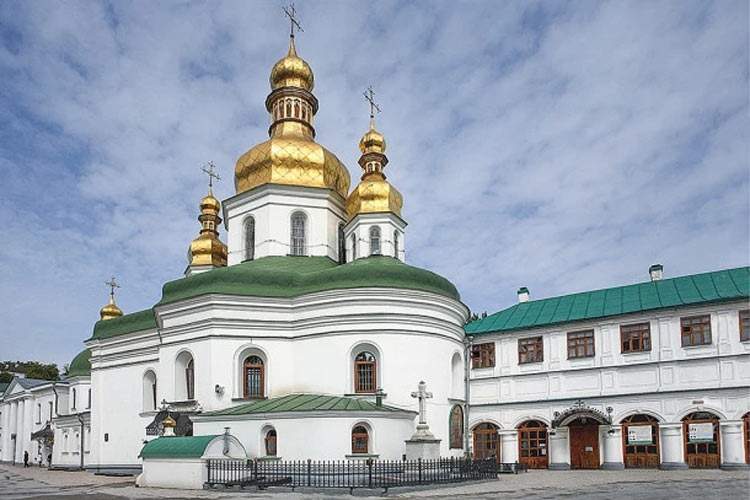UNESCO announced today that measures are underway to strengthen the protection of cultural sites inUkraine invaded by the Russian army. There are seven World Heritage sites in the country, as well as a significant number of churches, monuments, museums with important art collections. Today, the United Nations organization dealing with the protection of cultural heritage published a new report on the progress of Ukrainian heritage protection measures.
Specifically, UNESCO let it know that it is in contact with Ukrainian authorities to mark cultural sites with the Blue Shield emblem of the 1954 Hague Convention concerning the Protection of Cultural Property in the Event of Armed Conflict (which was signed by both Russia and Ukraine). Article 6 of the Convention stipulates that cultural property may bear a mark (the Blue Shield mentioned by UNESCO, in this case: it is an internationally recognized sign) that can make it identifiable and thus prevent it from being affected. Priority is given to sites included in the World Heritage list. The first challenge, UNESCO Director-General Audrey Azoulay has made known, is precisely to “mark cultural heritage sites and monuments and remind them of their special status as protected areas under international law.”
Still, UNESCO, with its partner UNITAR (United Nations Institute for Training and Research), has begun analyzing satellite images for sites deemed a priority that are in danger or have already been affected in order to assess the damage. The organization let it be known that to date there are a dozen sites that are covered by this monitoring system, and these include World Heritage sites. Contacts have also been established with civil society, professionals and heritage workers regarding the impact of the crisis on the situation of artists and cultural institutions.
Meetings with Ukrainian cultural professionals (World Heritage site managers, museum directors, and professionals responsible for movable and immovable heritage) are then scheduled for March 9 and 10 in order to identify emergencies and emergencies. To respond to these needs, UNESCO will mobilize international partners during an emergency response coordination meeting with UNITAR, the International Center for the Study of the Conservation and Restoration of Cultural Property (ICCROM), Blue Shield International, ICOM - International Council of Museums, ICOMOS - International Council on Monuments and Sites, and others.
“We must safeguard the cultural heritage in Ukraine,” Audrey Azoulay stressed, “as a testimony to the past but also as a catalyst for peace and cohesion for the future, which the international community has a duty to protect and preserve.”
Already last March 3, after the UN Extraordinary Assembly, UNESCO had expressed its concern about some of the sites at the center of the conflict: in particular, the organization regretted the damage suffered by the city of Kharkiv, a UNESCO Creative City for Music, and the historic center of Chernihiv, which is on Ukraine’s Provisional World Heritage List. UNESCO also expressed regret over reports of damage to the works of renowned Ukrainian artist Maria Primachenko. It also condemned the attack on the Kiev television tower that also affected the Holocaust memorial in Babyn Yar.
Pictured: the Kiev Cave Monastery. Photo by Ko Hon Chiu Vincent
 |
| Ukraine, UNESCO strengthens protection around monuments. Here's what it's doing |
Warning: the translation into English of the original Italian article was created using automatic tools. We undertake to review all articles, but we do not guarantee the total absence of inaccuracies in the translation due to the program. You can find the original by clicking on the ITA button. If you find any mistake,please contact us.